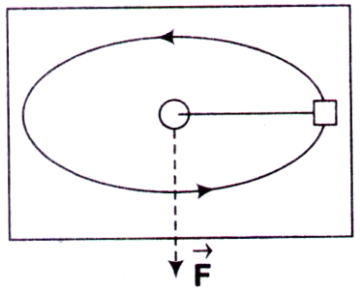The moment of inertia tensor of a rigid body is given by \[I = \left[ {\begin{array}{*{20}{c}}
8&0&{ - 4} \\
0&4&0 \\
{ - 4}&0&8
\end{array}} \right]\]
Moment of inertia a out an axis $${\bf{\hat n}} = \left( {\frac{1}{2},\,\frac{{\sqrt 3 }}{2},\,0} \right)$$ is
A. 6
B. 5
C. 2
D. $$\frac{8}{3}$$
Answer: Option B
Related Questions on Classical Mechanics
A. increases till mass falls into hole
B. decreases till mass falls into hole
C. remains constant
D. becomes zero at radius r1, where 0 < r1 < r0
A. $$\frac{c}{3}$$
B. $$\frac{{\sqrt 2 }}{3}c$$
C. $$\frac{c}{2}$$
D. $$\frac{{\sqrt 3 }}{2}c$$
The Hamiltonian corresponding to the Lagrangian $$L = a{{\dot x}^2} + b{{\dot y}^2} - kxy$$ is
A. $$\frac{{{p_x}^2}}{{2a}} + \frac{{{p_y}^2}}{{2b}} + kxy$$
B. $$\frac{{{p_x}^2}}{{4a}} + \frac{{{p_y}^2}}{{4b}} - kxy$$
C. $$\frac{{{p_x}^2}}{{4a}} + \frac{{{p_y}^2}}{{4b}} + kxy$$
D. $$\frac{{{p_x}^2 + {p_y}^2}}{{4ab}} + kxy$$
A. circular
B. elliptical
C. parabolic
D. hyperbolic


Join The Discussion